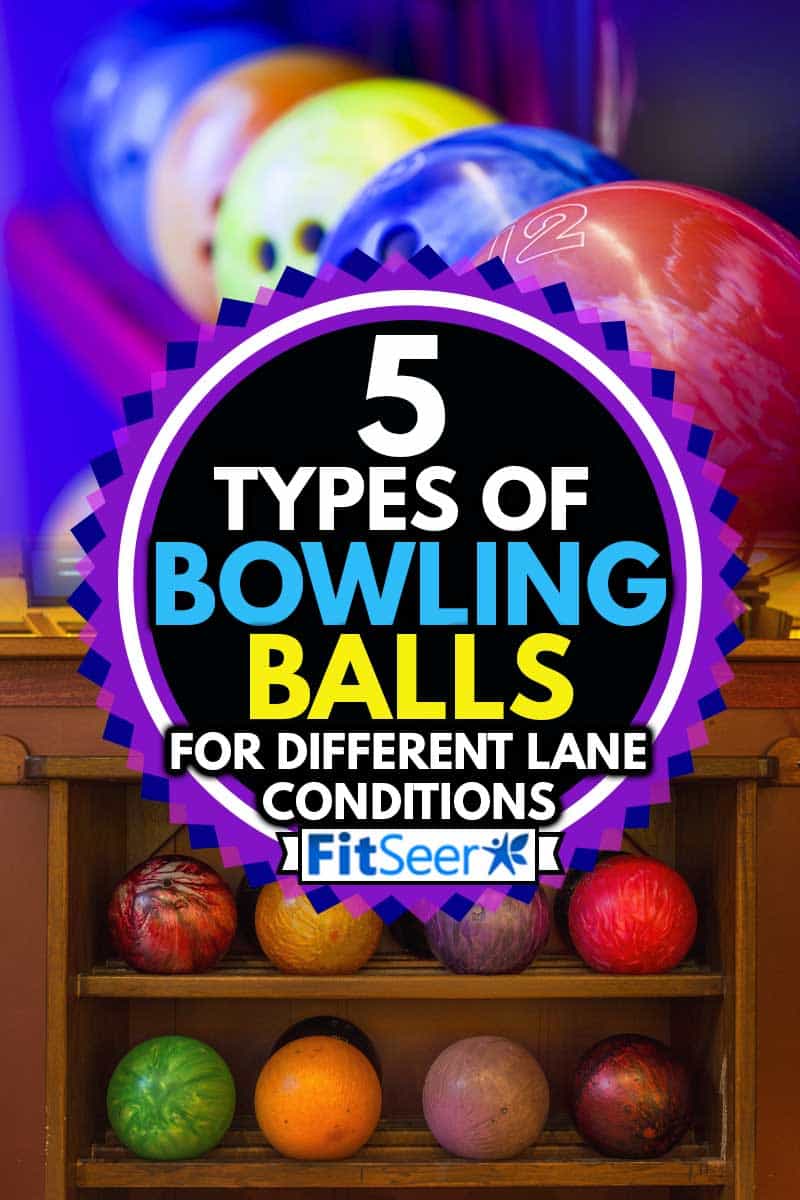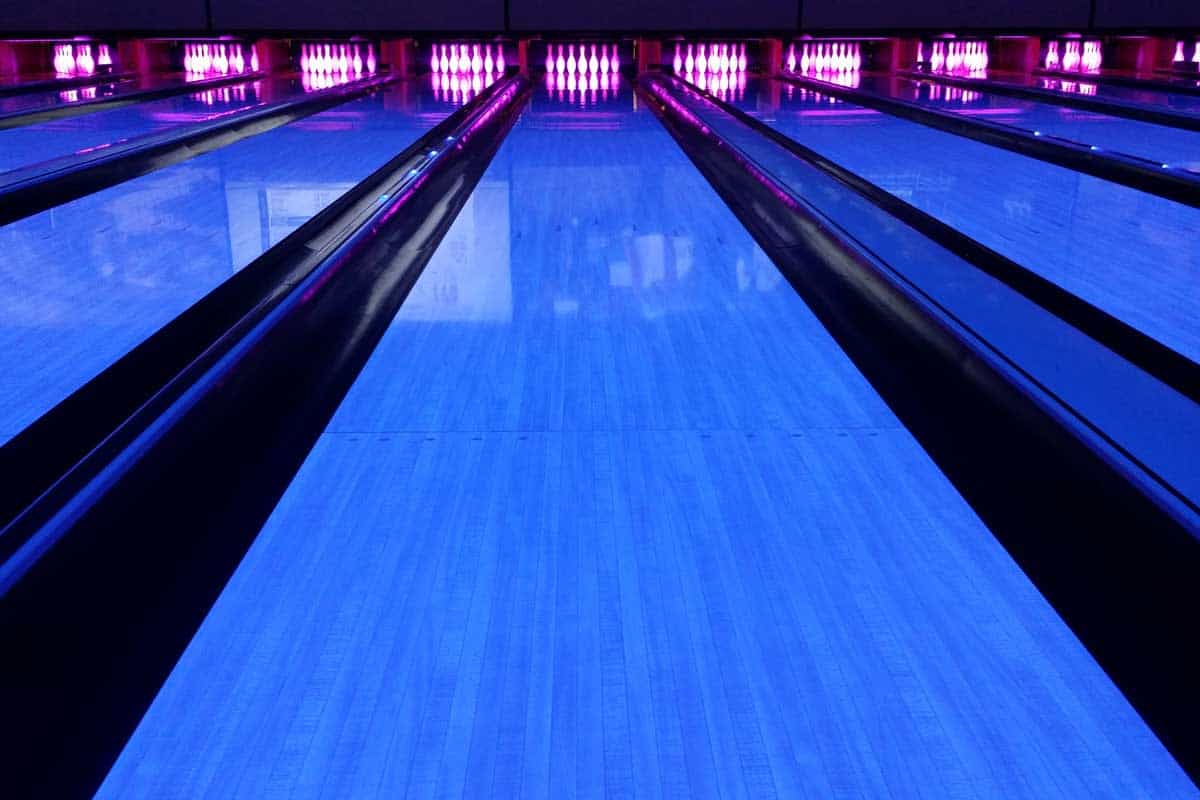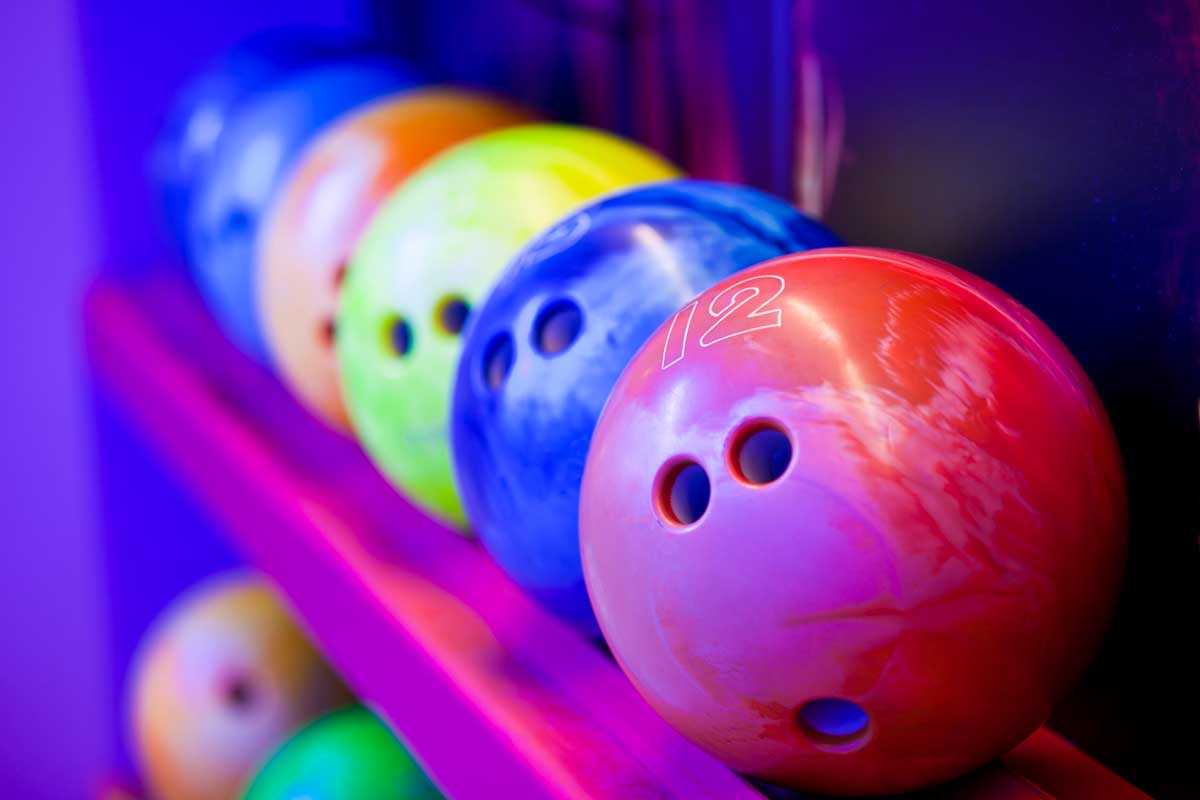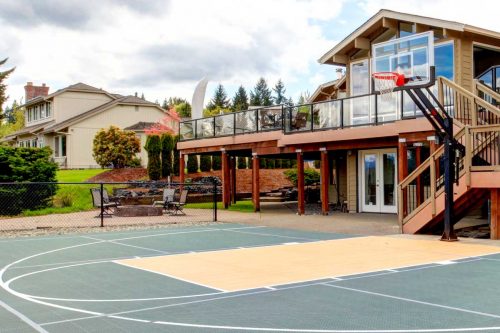Bowling is a fun sport, but the condition of the lanes can change or be different depending on the day or the bowling alley. The difference can be attributed to the amount of oil on the lane and the material the lane is produced with. We researched lane conditions and bowling ball materials to help you figure out which ball is best.
Lanes can be classified as very oily, somewhat oily, or dry. The outer part of the bowling ball is called the coverstock, which has the greatest impact on how your bowling ball reacts to the lane conditions. The following different types of coverstock material are fit for a variety of lane conditions:
- Plastic
- Urethane
- Solid Reactive Resin
- Pearl Reactive Resin
- Solid/Pearl Hybrid
Choosing the coverstock material is the most important choice that will impact your game. There are different kinds of inner weight blocks for different purposes. Bowling alleys may have wood lanes or synthetic lanes. In this guide, we will discuss the differences between lane and ball type to help you decide which ball is best for you. Let's continue, shall we?

Types Of Bowling Balls For Different Lane Conditions
The best ball for a professional bowler is not the best ball for a beginner. Lane conditions vary from dry to oily, and you want to choose the best ball(s) for your purpose. Let's look a little closer at the types of bowling balls and for what lane conditions they're fit.

Plastic
This ball is generally for beginners and not as adaptable to varying lane conditions and bowling styles. The plastic does not hook very well under any lane conditions and will skid under oily conditions.
Urethane
This is the best all-around ball for oily or dry lanes. This is an excellent option for someone who is starting to work on a hook shot. The urethane ball is more predictable and consistent than reactive resin balls.
Solid Reactive Resin
This is an intermediate/expert ball for medium to heavily oiled lanes. It is more difficult for beginners to control under varying conditions. A solid reactive ball is the best choice for oily lanes to have the most grip.
Pearl Reactive Resin
This is an intermediate/expert ball for medium to dry lanes. Like the solid reactive balls, this ball is not as consistent across lane conditions and more difficult for beginners to use. A pearl reactive ball is the best choice for dry to medium oiled lanes.
Solid/Pearl Hybrid
This is an intermediate/expert ball good for all lane conditions. The hybrid ball attempts to get the benefits of the solid and pearl coverstocks. It is more consistent across lane conditions than the pearl or solid reactive resin balls.
How Are Bowling Lane Conditions Determined?

The oil and lane type determine the lane conditions. We will talk more later about synthetic versus wood lanes. Originally, oil was applied to lanes to protect the wood from 15-pound bowling balls dropping on it frequently. The oil affects how the ball skids or rolls.
Local bowling alleys use a similar oil pattern called a house pattern, which is intended to provide the best conditions for higher scoring. The usual oil pattern has more oil in the center of the lane and less as it gets closer to the gutters.
Most people are right-handed, so the oil starts to dry up quicker just right of the centerline. A left-handed bowler may see more consistency across multiple games because other bowlers are more likely to be bowling just right of center.
How Does Oil Change The Bowling Conditions?
There are two types of bowlers. Some people bowl straight down the alley and aim for the center of the pins. Other people throw a hook shot that initially moves towards the gutters before hooking back. People who roll their ball straight will see minimal differences between different bowling lanes. Hook shot bowlers will need to adapt to varying lane conditions.
Even in the course of competition in league play, the condition of the lanes will change from the beginning to the end of the competition. Where people roll the ball most frequently will become drier as time goes on.
What Type Of Bowling Balls Do Professionals Use?

Professionals typically use reactive resin bowling balls. There are three kinds of reactive resin, which are pearl, solid, and hybrid (pearl and solid). All of them are more difficult to control because they are touchy to small changes in your roll. They are also very reactive to lane conditions but are preferable to bowlers with a controllable hook shot.
A professional bowler might start bowling with a solid reactive ball and switch to a pearl ball after the oil starts to wear off. A hybrid ball is a good all-around option as the only ball for a professional.
Pyramid Path Reactive Resin With Pearl Coverstock
Click to see this product on Amazon.
What Is The Best Bowling Ball For Wood Lanes?
Wood lanes are softer than synthetic lanes, so they naturally have more traction when oiled. Reactive resin bowling balls have more grip than plastic and urethane. If you are looking for the ball with the most hook potential, then you will choose a reactive resin ball.
These have more grip but can be more difficult to control for beginner to intermediate bowlers. A bowler who throws a straight ball can use plastic or urethane bowling balls for more consistency across all lane conditions. Reactive resin balls are by nature reactive and more sensitive to differing lane conditions.
Brunswick Twist Reactive Bowling Ball
Click to see this product on Amazon.
What Is The Best Bowling Ball For Synthetic Lanes?
Synthetic lanes are harder than wood lanes. This means that they have less grip than wood lanes under most conditions. When the oil on the lane is drier, then the synthetic lane has more hook potential.
Since the grip is not as good on highly oiled synthetic lanes, the best ball to get would be a solid reactive resin ball. This coverstock creates the most friction on medium to heavily oiled lanes and also has good grip when the lane starts to dry. A bowler with a straight roll could use a plastic or urethane ball but will lose some control when lanes are heavily oiled.
What Weight Stock Should You Use?
Bowling balls have two kinds of weight stock and they can be referred to in different ways. Asymmetrical weight blocks are pancake-shaped and placed on one end of the ball. These can also be referred to as three-piece or low mass bowling balls.
Symmetrical weight blocks are high mass and placed in the middle core of the bowling ball. These blocks may also be referred to as two-piece bowling balls, although modern versions now contain more than two pieces. The high mass symmetrical weight block is what you will find in a high-performance ball. This is the best option for grip and control.
Difference Between Left- and Right-Handed Bowling Balls
There are no holes when you buy a new bowling ball. Any ball you purchase new can be used by a left-handed bowler or a right-handed bowler. This will change the distance between the holes and the placement of the holes.
As gameplay goes on, the oil just right of center will dry up more quickly because there are more right-handed bowlers. For this reason, right-handed bowlers should be prepared for dry lanes and moderately oiled lanes. A pearl reactive resin ball is the best all-around choice with a hybrid reactive resin as the second best. Left-handed bowlers should be prepared for oily lanes, and the best option is a solid reactive resin ball. The next best ball for left-handed bowlers is a hybrid reactive resin.
In Closing
Bowling ball technology has changed to give bowlers more control over their game. Bowling on wood lanes provides more grip than synthetic lanes with medium to heavy oil. The amount of oil from lane to lane changes the amount of grip and control based on the coverstock material.
A professional bowling ball will be a two-piece with a symmetrical weight block in the center. The coverstock would be a pearl coverstock or hybrid. Professionals will bring different styles of balls to adjust to the lane conditions. If you throw a straight ball, then the amount of change between lane conditions is slight.



![Read more about the article How Much Does It Cost to Go Bowling? [and Should You Buy Your Own Gear]](https://fitseer.com/wp-content/uploads/2020/10/Close-up-view-score-monitor-in-bowling-club-500x333.jpg)
![Read more about the article Does Tennis Give You Abs? [The Answer Might Surprise You!]](https://fitseer.com/wp-content/uploads/2021/10/Sexy-male-tennis-player-in-black-background-500x333.jpg)

![Read more about the article How To Clean The Inside Of A Baseball Glove? [5 Steps]](https://fitseer.com/wp-content/uploads/2021/01/A-dirty-baseball-glove-and-baseball-on-a-dark-background-500x333.jpg)
![Read more about the article What Do You Need For Pilates At Home? [The Complete List]](https://fitseer.com/wp-content/uploads/2021/02/A-woman-practising-yoga-on-her-yoga-mat-500x333.jpg)
